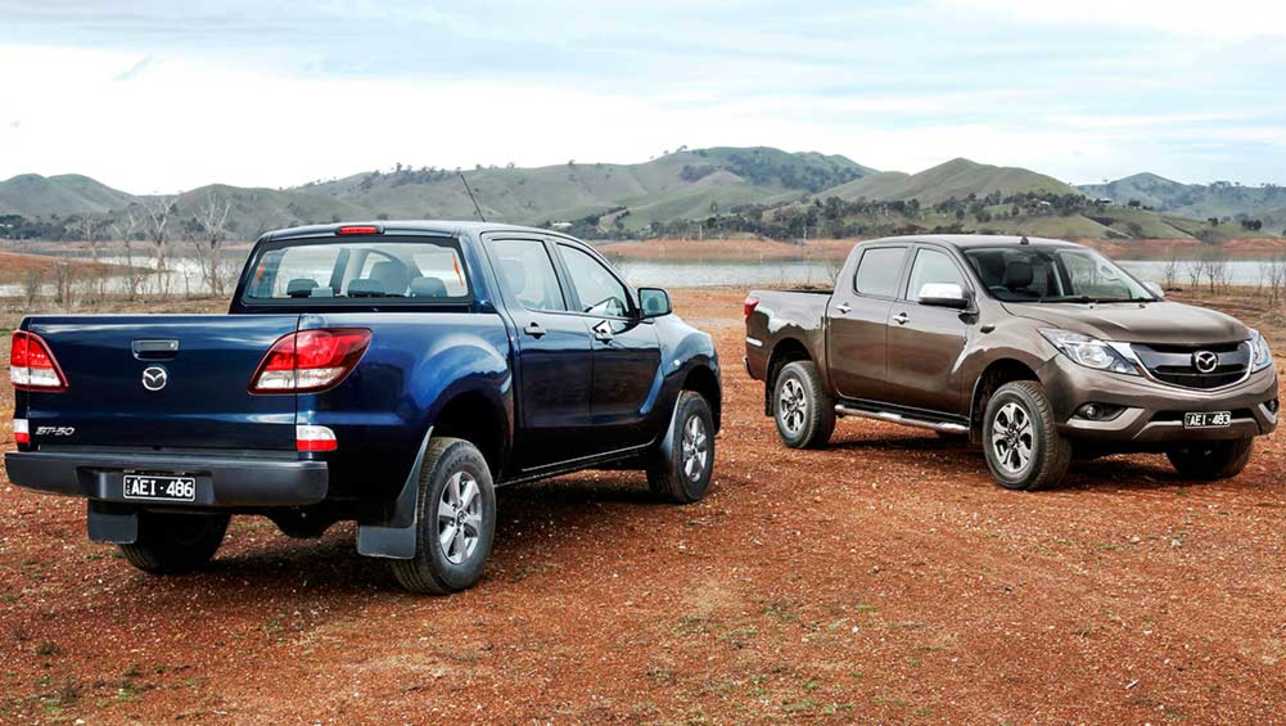If there's one things tradies and commercial vehicle buyers hate it's spending unnecessary money on a decent set of work wheels. For this sector of pragmatists, robust performance, reliability and cost-effectiveness rule. Good news arrives, then, in the form of just-released pricing for Mazda's refreshed BT-50 range, set to go on sale later this month.
Admittedly changes to the light commercial utility are minor, but the fact that pricing has not risen a cent for the entry-level BT-50 Single Cab Chassis with 2.2-litre engine and six-speed manual transmission will be welcome news for buyers. The kicker that pricing has moved upwards by as little as $75 for some Single and Dual Cab Chassis and Freestyle Cab models will also well received. This near-price freeze on some models comes despite the drop in the Aussie dollar and other commercial pressures on the Japanese importer. Elsewhere in 23-variant range, rises have been contained within hundreds of dollars, rather than the hike in the thousands for some models of the rival (and jointly developed) Ford Ranger models. The biggest BT-50 price increases, which occur among the 4WD dual-cab XTR models, still only amount to a maximum of $810, while the top-spec GT models are up $650.
Exterior changes
So, does this flat or modest price movement actually see any tangible benefits brought to the BT-50 line-up? Visually, it's very much subtle evolution, rather than revolution. Mazda has responded to buyer feedback that the outgoing model was too "friendly" and benign-looking, and lacked the visual toughness customers in this class expect. To address this, the new BT-50 gets a revised front fascia, grille, and headlights, designed to bring the front-end styling into line with Mazda's Kodo design language featured across the model range, and give the utility vehicle a tougher, more macho visage. Side indicators are now integrated into the exterior mirrors, while new taillights and the offer of new aluminium wheel designs round out the changes.
Body and drivetrains
As for body styles and drivetrains, the old "if it ain't broke..." mantra would seem to apply here, with the same single cab, double cab and Freestyle variants continuing unchanged. Likewise the engine and transmissions, with the four-cylinder 2.2-litre turbo-diesel and 3.2-litre five-cylinder turbo-diesel continuing to be offered with either six-speed manual or six-speed automatic transmissions, as well as the choice of rear- or all-wheel drive. We know the Ford Ranger's version of the four-cylinder engine has been tweaked to raise outputs to 118kW and 385Nm (up 8kW/10Nm), but Mazda has not confirmed if its model follows suit, or continues with 110kW and 375Nm.
Inside
We're yet to see official pics of the updated BT-50's interior, but Mazda claims upgrades to trim materials and equipment levels will further raise the appeal of its ute. Again, these changes look relatively minor: expect a reversing camera to be offered or included on some models, while the revised dash will include a larger infotainment screen and improved connectivity.
The sell
Mazda will throw considerable marketing muscle behind the BT-50 launch, as it knows it needs to raise its game in this burgeoning and lucrative segment. The outgoing rear-drive model has found favour with buyers, sitting third behind the sales leaders, but the 4x4 models have not performed as strongly. In this category, the BT-50 lags behind rivals Toyota HiLux, Mitsubishi Triton, Ford Ranger, Nissan Navara, and even the Isuzu D-Max.
Question is, will the changes to the facelifted BT-50 be enough to reverse these fortunes?





.jpg)
.jpg)



.jpg)
.jpg)
.jpg)
.jpg)
.jpg)
.gif)

.jpg)
.jpg)
.jpg)
.gif)


.jpg)


.jpg)

.jpg)
.jpg)



.jpg)




Comments